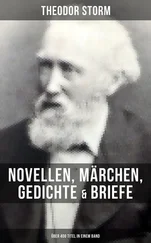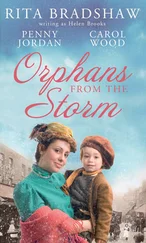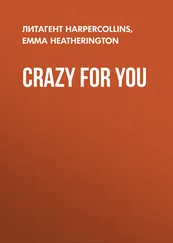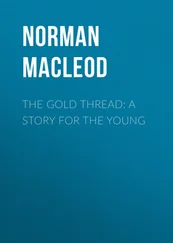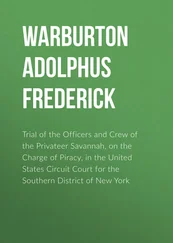I ran down the embankment and across the horseshoed sand in the cove. The beach was empty and smelled like seaweed. I dropped my board and streaked for the ocean. When I hit the water my skin stung as if cakes of dried mud were tearing off of me. Now there was nothing buffering me from the pain.
I miss you, Dad.
I felt my tears flooding into the water. I opened my eyes. It was murky down there. A big shit storm.
You vanished.
I dove deeper and skimmed the sandy bottom. Dark.
You left me all alone. All alone.
I needed air. Surfaced. The ocean under my chin rippled and swayed. I was not okay like I wanted to believe. I was sad. I was angry. And it made me feel ugly and lonely and cruel sometimes.
I came to shore and pounded the sand with my fists. I kicked and beat the sand for a long time. When I was worn out I rolled onto my side and stared at the ocean.
I was in pieces. Unable to gather myself back together. I stopped trying, and it wasn’t so bad to be in pieces. I was calm, easy, light. Then the pain cut deeper into me, all over me. But somehow it was all right to feel things so close to my bones. The pain did not crush me.
The ocean spread out and the swells undulated and the waves looked beautiful peeling down the point. Dad taught me to fly right there on those waves. They were there for me to ride for all time, like the powder, streaming through the center of my body. I stood up.
The sand filled out the high arches of my feet, balancing me. In the hiss of the surf whispered my dad, asking me to trust that heaving wave in Mexico, trust that the ominous wall would bend and wrap me in its peaceful womb, revealing everything essential, a dream world of pure happiness— beyond all the bullshit .
Off the point at Topanga Beach I stared into the eye of a distant wave. Somewhere in the oval opening I grasped what Dad had always tried to make me see. There is more to life than just surviving it. Inside each turbulence there is a calm—a sliver of light buried in the darkness.
TWENTY-SEVEN YEARS LATER, I was driving to Mammoth with my six-year-old son, Noah, and we pulled into Lone Pine. As always, I pointed out Mount Whitney. It was haloed by swirls of snow dust alone in the bluest of sky. Noah was playing his Game Boy and he glanced at the blocky summit, yawned, then suddenly asked,
Did your dad use to show you Mount Whitney too on the way to Mammoth?
Yep, I said.
Is it true that you skied the Cornice when you were four?
Yep.
But you’re not going to make me ski it. Right? he said.
No. Those were different times. My dad made me do lots of things that I’d get arrested for making you do.
Really? he said.
Oh yeah, I said.
Like what?
By the time we reached Bishop I had chronicled our skiing exploits from L.A. to Utah, and Noah had stowed his Game Boy in the backseat cubbyhole.
Noah asked me lots of questions and I answered them the best I could. Then as we climbed the Sherwin Grade out of Bishop he asked me about the airplane crash. I paused. He knew the general facts, his curiosity piqued by the scar on my chin. Now it was time to reveal more details, leaving out the goriest parts. I wanted to demystify the ordeal so that he would understand that reaching deep into yourself to overcome something seemingly indomitable was accessible to everyone, especially him.
Forty minutes later our car skidded and lurched in the snow along the road to our old cabin. It was snowing hard. I pulled into the driveway, stopped and looked in the rearview. Noah was staring at the back of my head, eyes narrowed, mulling over the ordeal I had just laid bare for him.
That’s the story, I said.
Were you scared? he said.
Yeah, but I was in shock, I said. I just focused on getting down. There was no time to be scared.
I opened the door and then his door and he stepped out into the fresh powder. We looked at each other and I saw that he was okay, eyes bright and strong. He kicked the snow with his boot and the crystals spread wide, floating.
Should be some good powder skiing tomorrow, he said, parroting my enthusiasm.
Yep, I said. If you have any questions it’s okay to ask them. You can ask me anything. Okay?
I know, he said.
I had always wondered what exactly went wrong during our flight back in 1979. It took me twenty-seven years to get up the guts to find out. I obtained the National Transportation Safety Board’s Accident Report for our incident . The verbatim transmissions between the pilot and the control towers were included in the report.
Once I had it in hand I met my friend Michael Entin at the Santa Monica Airport. Michael has over twenty-five years of flying experience. When I sat down in the front seat of his four-seat Cessna and saw all those switches and dials, and the radar tower out the windshield, my throat went sticky and my heart beat against my breastbone. The sky was blue, yet I felt dreary, as if it were overcast all of a sudden.
You were doomed from takeoff, said Michael right away.
He pointed to one of Rob’s first transmissions: I’m, ah, VFR [Visual Flight Rules] over, ah, LA en route to Big Bear airport for landing, I’d like, ah, radar following for a steer, unfamiliar with the area.
Thirty seconds into your flight Rob was already lost and had no idea where he was going, said Michael. He was using an underpowered plane with no instruments on a cloudy day—he never should have taken off, much less proceeded toward the storm ahead.
Apparently, air traffic control warned Rob three times during our flight not to fly VFR—meaning the pilot can see for at least two miles in all directions and there are no foreseeable obstructions to his maintaining this ability.
Worse, said Michael, it says here that the pilot never even got a weather briefing or filed a flight plan. Basic stuff, Norm. Had he done that, he would have known not to take off.
What a waste, I thought. My father wasn’t killed by an avalanche while skiing an epic powder bowl. No giant tube ate him alive at the moment of ecstasy. Instead, a guy he didn’t know took him on a doomed, easily avoidable airplane ride, killing him, his girlfriend and almost his son.
When we had finished poring over the transmissions I was nauseous and wanted out of the plane. Michael was studying the NTSB tracking map of our 1979 flight path, and I searched for the door handle.
You want to retrace the flight? said Michael, and my hand froze on the lever. Figure out where Rob went off course?
I looked out the window—not one cloud in the sky. I took a deep breath. This is a once-in-a-lifetime opportunity, I told myself.
Then my stomach lurched into my throat. No fucking way, I thought.
Yeah, that’d be great. Let’s go for it, I said.
Michael fired up the turboprop, went through his checklist, and I settled into the passenger seat, slipping on the headphones just as I had when I was eleven years old.
We retraced the 1979 flight path, wandering off course up San Antonio Canyon, swooping over Ontario Peak. It made me woozy but I wouldn’t get another chance at this, so I took it all in.
Then Michael flew us over the Big Bear airport. The landing strip, tucked into the mountains at nearly seven thousand feet, cut a black swath in the tall evergreens and butted up against Big Bear Lake.
It’s an unmanned airport, he said. There’s no one down there to guide you in—you’re on your own. If Rob had filed a flight plan and weather briefing he would have known that he was flying into a socked-in airport. Even with my turbo power and all these sophisticated instruments I wouldn’t have tried to land there on that day. No way.
Читать дальше
Конец ознакомительного отрывка
Купить книгу


